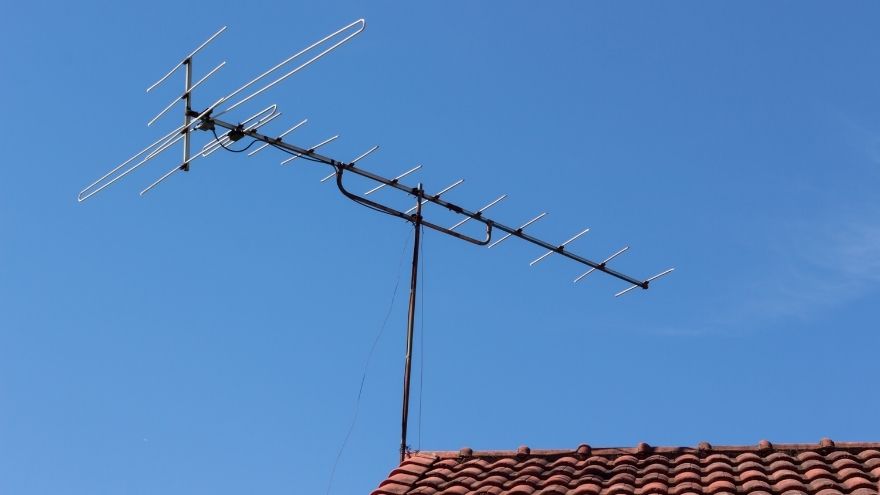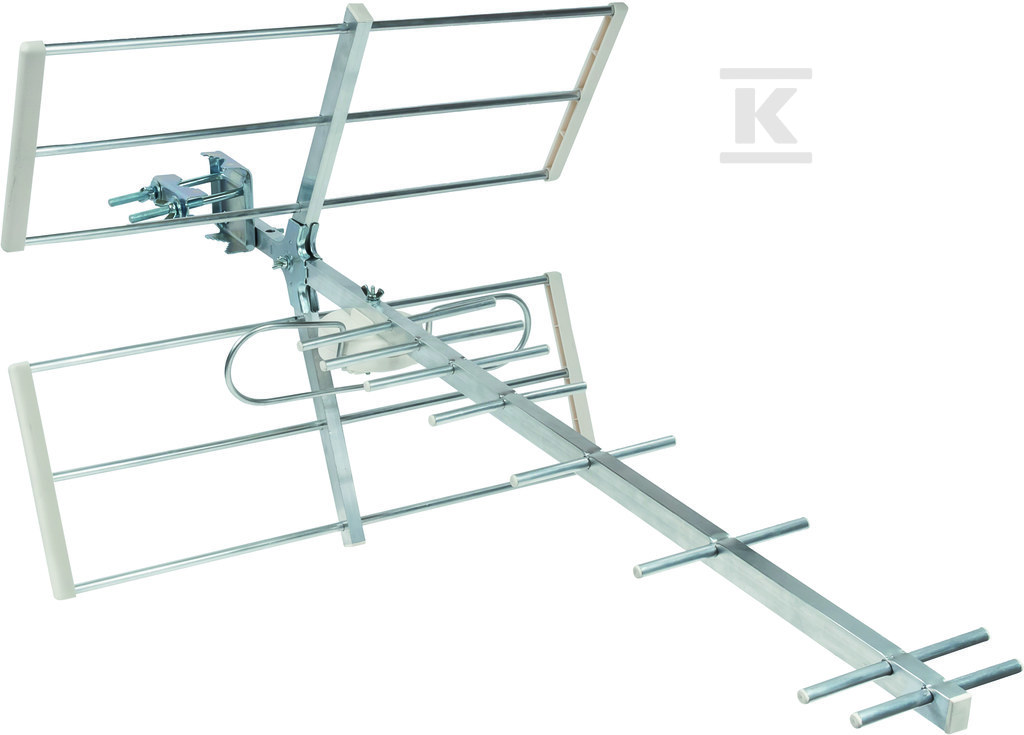To receive digital terrestrial television, a properly selected internal or external antenna is necessary, providing UHF frequency reception. On the market, you can find various types of DVB-T antennas and those compatible with the latest DVB-T2 standard. Indoor antenna vs. external antenna - which one to choose for the best signal quality? We checked it!

Check out the antennas at the Onninen wholesaler
When is an indoor antenna a better choice?
 Buying a DVB antenna is quite a challenge – especially for people outside the RTV/audio industry. To receive digital terrestrial television, external antennas (e.g. wide directional antennas) and internal antennas (also known as room or indoor antennas) are used. The latter are usually in the form of a panel and are equipped with a signal amplifier.
Buying a DVB antenna is quite a challenge – especially for people outside the RTV/audio industry. To receive digital terrestrial television, external antennas (e.g. wide directional antennas) and internal antennas (also known as room or indoor antennas) are used. The latter are usually in the form of a panel and are equipped with a signal amplifier.
When is a small, discreet and inexpensive indoor antenna a better choice? It works best in cities and residential areas, where the transmitter is located in close proximity to the receiver, so the signal strength is high. However, it should be remembered that very dense development and significant unevenness of the terrain can seriously interfere with the signal.
In what cases will an external antenna be better?
It is worth deciding to install an external antenna in places where there is no direct view of the transmitter and the signal strength does not allow watching TV programs without interference. There are various types of external terrestrial antennas available on the market.
- External panel antennas look like indoor models, but can be safely mounted outdoors. Most panel devices have a built-in amplifier (active antennas). This means that the signal sent by the transmitter is first received by the converter, and only then transmitted to the decoder or directly to the TV.
-
 Directional antennas , as the name suggests, are directed at the transmitter, which requires very precise positioning. They then provide excellent signal quality. They also offer high gain, so they do not require the use of an amplifier. They are able to effectively receive the signal from a distance of up to 45-60 km. Reception interference can be caused by obstacles, e.g. tall buildings, mountainous terrain, etc.
Directional antennas , as the name suggests, are directed at the transmitter, which requires very precise positioning. They then provide excellent signal quality. They also offer high gain, so they do not require the use of an amplifier. They are able to effectively receive the signal from a distance of up to 45-60 km. Reception interference can be caused by obstacles, e.g. tall buildings, mountainous terrain, etc. - Omnidirectional antennas receive the signal with the same efficiency from all directions. They are more efficient than directional models and are also easier to install because they do not require such precise direction selection. They work reliably in all conditions without calibration. Their use is recommended for small distances from the transmitter. In addition to watching TV programs, an external omnidirectional antenna provides access to many radio stations.
- Wide-angle antennas are characterized by high gain, so they do not require as precise alignment as directional models. They are often equipped with a preamplifier, which allows for signal reception from huge distances (even 100 km).
Of course, before you replace your indoor antenna with an advanced outdoor model, try experimenting with the settings by changing the direction or angle. If, despite this, you do not notice any improvement in the signal quality, it is worth contacting a specialist who will assess whether the problem really lies in an incorrectly selected, installed or adjusted antenna and will suggest appropriate actions. It should be remembered that a DVB-T2 decoder (receiver) is usually required for effective reception of digital terrestrial television. Modern televisions are often factory-equipped with the required components.
It is worth knowing that the problem of unsatisfactory image and sound quality can be effectively solved by a solid antenna power supply. It will work well in situations when the antenna is too far from the receiver or is connected to a large number of receivers. There are basic models and premium variants with the option of adjustment.
Side-by-side comparison: indoor antenna vs outdoor antenna
It is difficult to compare indoor and outdoor antennas, because both types are used in different conditions. Each installation situation should be considered individually. A DVB-T/DVB-T2 antenna should be selected only after a thorough analysis of a number of factors that affect the signal quality to varying degrees.
 An indoor antenna works well in places where it is possible to effectively receive a signal from a nearby transmitter. At large distances and numerous interfering factors, you need to prepare for a more complicated process of selecting an antenna. In extreme terrain conditions, even the most expensive outdoor antenna may prove insufficient. On the other hand, an antenna that is too powerful does not serve to properly receive terrestrial television either.
An indoor antenna works well in places where it is possible to effectively receive a signal from a nearby transmitter. At large distances and numerous interfering factors, you need to prepare for a more complicated process of selecting an antenna. In extreme terrain conditions, even the most expensive outdoor antenna may prove insufficient. On the other hand, an antenna that is too powerful does not serve to properly receive terrestrial television either.
If you know that the transmitter is in your immediate vicinity, choose a basic indoor antenna to start with. You should also not underestimate the role that a high-quality, properly selected antenna cable plays in the signal transmission process.
Professionals involved in the assembly, servicing or sale of RTV-AUDIO installations and equipment are invited to familiarize themselves with the offer of our wholesaler. Our assortment includes a wide range of devices, home, office and RTV equipment. You can order a terrestrial antenna of the selected type, an antenna socket and cables with the required parameters from us and take advantage of expert advice.